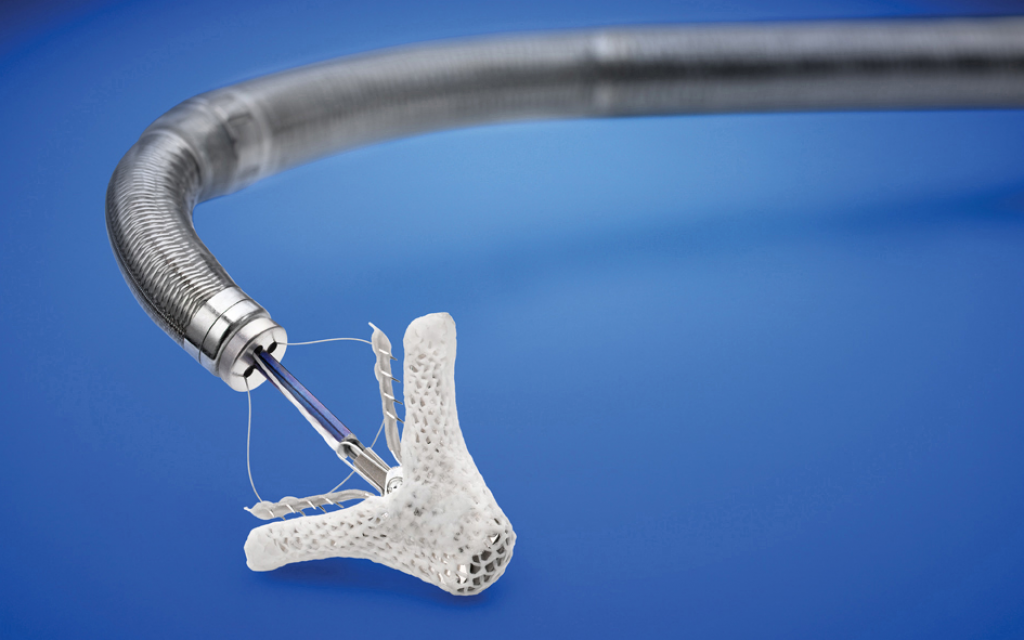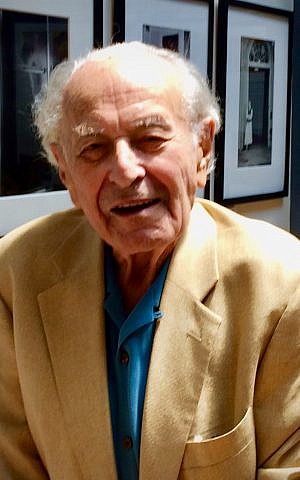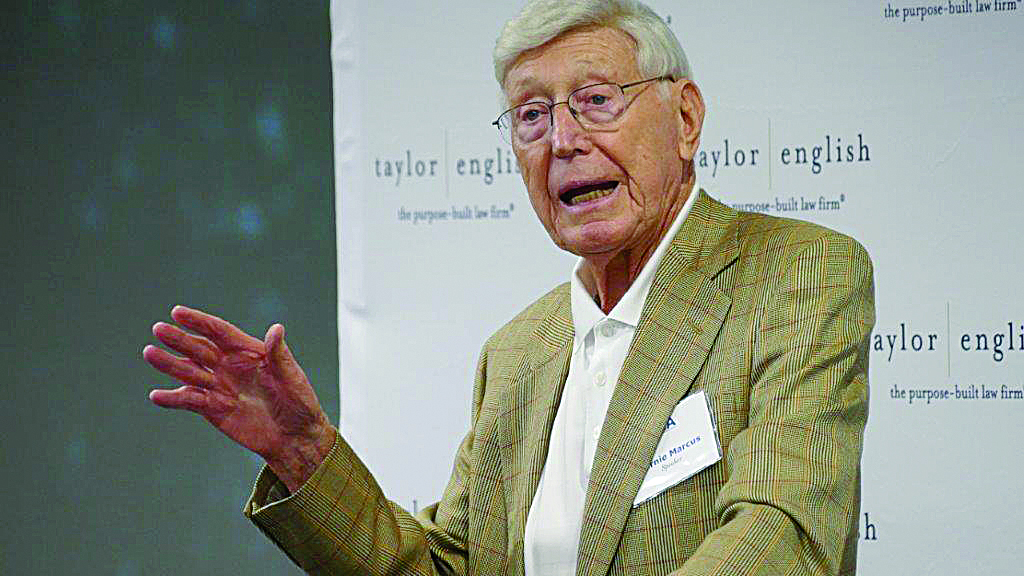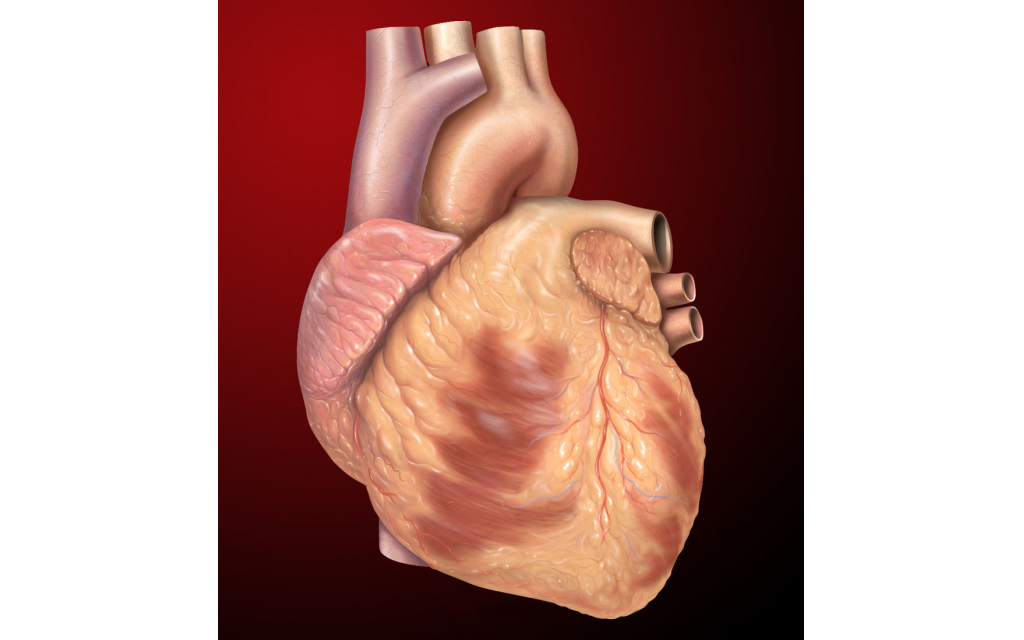Heart Valve Surgery Promises Longer and Better Life
The new, minimally invasive method involves a delicate procedure that places a small plastic device called a MitraClip in the heart.

Eugen Schoenfeld, who will celebrate his 93rd birthday next month, owes much of his long life to medical science. In the last 50 years, he has suffered a major heart attack that almost killed him, endured open heart surgery and a quintuple bypass to repair blocked arteries, and had three operations to replace a pacemaker that regulates his heartbeat.
But earlier this year, Schoenfeld, former chair of the sociology department of Georgia State University and an AJT contributor, thought his luck might be running out. He had lived long enough to see the recent bar mitzvah of his great-grandson, but he was beginning to feel that that might be his last joyous celebration.
“I did not like the idea of dying,” he admitted. “It’s very difficult. It’s difficult to conceive that you are going to cease to have consciousness and existence. Of course, I love life. Life is good.”
Get The AJT Newsletter by email and never miss our top stories Free Sign Up
What made him think that he might not survive was the trouble he was having with a leaky heart valve and the congestive heart failure that it was bringing with it. One lung was rapidly filling up with fluid. He tired easily and could only take a few steps before resting. His score on a test to assess the severity of his condition gave him little chance of survival.

He was too old and too frail to have the valve replaced surgically, and he had begun putting his affairs in order.
Then he heard of a relatively new, minimally invasive procedure that, for those who qualified, offered a new lease on life. The operation involves a delicate procedure that places a small plastic device called a MitraClip in the heart. The MitraClip is manufactured by Abbott, and prevents much of the leakage that occurs around the opening and closing of the heart valve.
The procedure, which was first approved by the U.S. Food and Drug Administration five years ago, has shown considerable success. A major clinical research study two years ago by the American College of Cardiology showed significantly greater results than with just the use of medication.
A year after having the surgery, the study showed that 74 percent of the patients had none or only slight limitations on physical activity.
The success of the procedure in the United States and in Europe has spurred research in new devices that can help repair malfunctioning heart valves. Just last week the American College of Cardiology and the American College of Thoracic Surgery held a Heart Valve Summit in Chicago to discuss the recent advances in treatment.
In recognition of the significant progress in treating the condition the Marcus Foundation, started by Home Depot co-founder Bernie Marcus, donated $20 million in 2012 to Atlanta’s Piedmont Hospital. The grant established the nation’s first comprehensive heart valve center for medical training, research and care.

Marcus said at the time that “this is the opening up of another area for medicine, and certainly one that we need desperately in Georgia and in this metropolitan area.”
Sidney Kirschner is chief philanthropy officer of the Piedmont Foundation and former president and CEO of the Piedmont Heart Institute. He has his own long history of community philanthropy, but hailed the Marcus donation.
“This center fills a void in the community and region by offering a coordinated and integrated care model. Most importantly, it improves the quality of life for patients and their families.”
But Marcus had just begun. In 2016, he gave Piedmont an additional $75 million to establish the Marcus Heart and Vascular Center, which is beginning to rise at the hospital on Peachtree Street. It is believed to be the second largest donation ever made to a community hospital in the United States.
That’s good news for people like Schoenfeld. Last month, in a two-hour surgery, a team of three surgeons threaded a catheter up to the heart through a vein in the upper part of his leg. They inserted the tiny MitraClip to repair his malfunctioning valve. Two days later they sent him home to complete his recovery.

Today, his doctors consider the operation a success. The color in his face has come back. He can walk up to a mile without any of the problems he had suffered in the past, and the improvement in his circulation has also helped a serious eye problem that had been worrisome.
A 2012 study at the Yale School of Medicine confirmed that patients undergoing the procedure to repair their heart valve not only have a better quality of life but stand to have a longer life as well.
So Schoenfeld hopes to be around for several more years.
“My doctor says I can do anything I want. So now, after I celebrated my great-grandson’s bar mitzvah this year, I told him about my wish to be around for my great-granddaughter’s bat mitzvah three years from now, when I’m 96.”
In the meantime, Schoenfeld, who’s been saved one more time by his doctors, is beginning to live the good life again. Later this winter he’s planning a cruise to the Caribbean.



comments